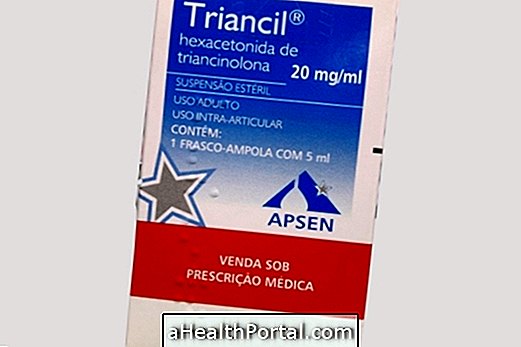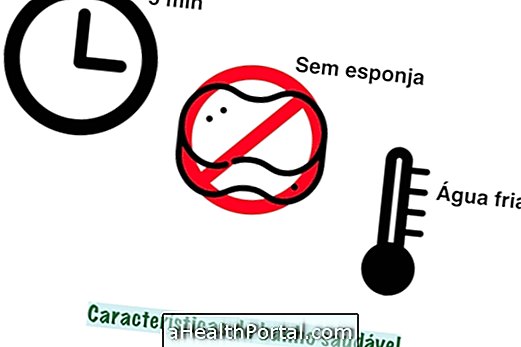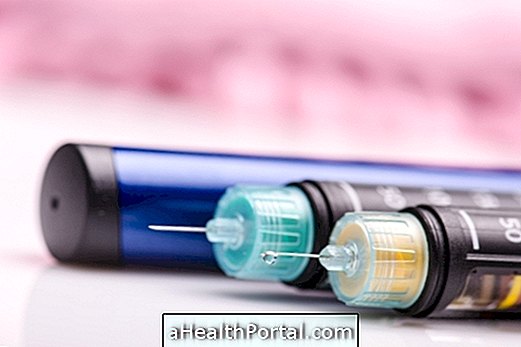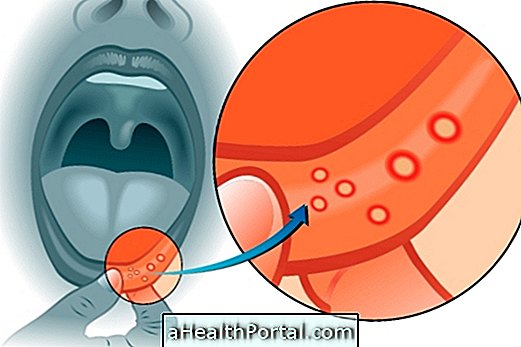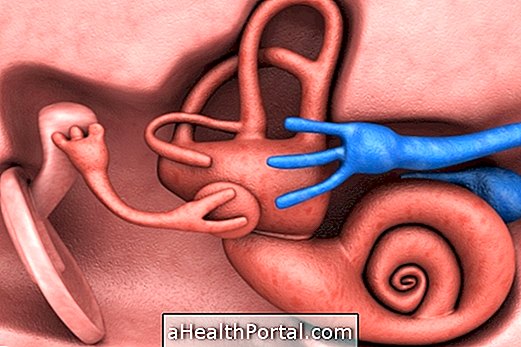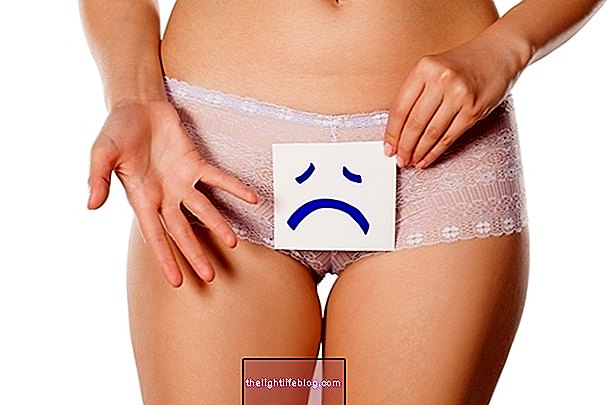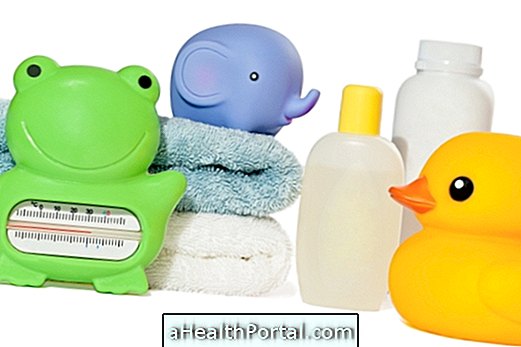Dipyrone is an analgesic, antipyretic and spasmolytic medicine, widely used in the treatment of pain and fever, usually caused by colds and flu, for example.
Dipyrone may be purchased from conventional pharmacies under the trade name Novalgina, Anador, Baralgin, Magnopyrol or Nofebrin, in the form of drops, tablets, suppository or as an injectable solution, at a price that may vary from 2 to 20 reais depending the dosage and the form of presentation.
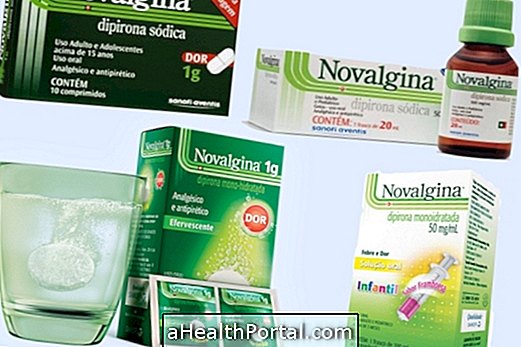
What is it for
Dipyrone is indicated for the treatment of pain and fever. The analgesic and antipyretic effects can be expected within 30 to 60 minutes after administration and generally last for about 4 hours.
How to use
The dosage depends on the dosage form used:
1. Simple tablet
The recommended dose for adults and adolescents over 15 years is 1 to 2 500 mg tablets or 1 1000 mg tablet up to 4 times daily. This medicine should not be chewed.
2. Effervescent tablet
The tablet should be dissolved in half a glass of water and should be drunk immediately after dissolution is complete. The recommended dose is 1 tablet up to 4 times a day.
3. 500 mg / mL oral solution
The recommended dose for adults and adolescents over 15 years is 20 to 40 drops in a single dose or up to a maximum of 40 drops, 4 times a day. For children, the dose should be adapted to the weight and age, according to the following table:
| Weight (average age) | Dose | Drops |
| 5 to 8 kg (3 to 11 months) | Single dose Maximum dose | 2 to 5 drops 20 (4 x 5 drops) |
| 9 to 15 kg (1 to 3 years) | Single dose Maximum dose | 3 to 10 drops 40 (4 shots x 10 drops) |
| 16 to 23 kg (4 to 6 years) | Single dose Maximum dose | 5 to 15 drops 60 (4 x 15 drops) |
| 24 to 30 kg (7 to 9 years) | Single dose Maximum dose | 8 to 20 drops 80 (4 x 20 drops) |
| 31 to 45 kg (10 to 12 years) | Single dose Maximum dose | 10 to 30 drops 120 (4 x 30 drops) |
| 46 to 53 kg (13 to 14 years) | Single dose Maximum dose | 15 to 35 drops 140 (4 outlets x 35 drops) |
Children younger than 3 months of age or weighing less than 5 kg should not be treated with Dipirone.
4. Oral solution 50 mg / mL
The recommended dose for adults and adolescents over 15 years is 10 to 20 mL, in a single dose or up to a maximum of 20 mL, 4 times a day. For children, the dose should be administered according to weight and age, as shown in the table below:
| Weight (average age) | Dose | Oral solution (in ml) |
5 to 8 kg (3 to 11 months) | Single dose Maximum dose | 1.25 to 2.5 10 (4 x 2.5 mL) |
| 9 to 15 kg (1 to 3 years) | Single dose Maximum dose | 2.5 to 5 20 (4 x 5 mL) |
| 16 to 23 kg (4 to 6 years) | Single dose Maximum dose | 3.75 to 7.5 30 (4 x 7.5 mL) |
| 24 to 30 kg (7 to 9 years) | Single dose Maximum dose | 5 to 10 40 (4 x 10 mL sockets) |
| 31 to 45 kg (10 to 12 years) | Single dose Maximum dose | 7.5 to 15 60 (4 x 15 mL sockets) |
| 46 to 53 kg (13 to 14 years) | Single dose Maximum dose | 8.75 to 17.5 70 (4 x 17.5 mL sockets) |
Children younger than 3 months of age or weighing less than 5 kg should not be treated with Dipirone.
5. Suppository
Suppositories should be applied rectally as follows:
- Always keep the suppository carton in a cool place;
- If the suppositories are softened by heat, the aluminum foil should be soaked for a few seconds in cold water to return to the original consistency;
- Following the pecking in the aluminum packaging should only highlight the suppository to be used;
- Before applying the suppository, you should wash your hands thoroughly and, if possible, disinfect them with alcohol;
- With your thumb and forefinger, you should move your buttocks apart and insert the suppository into the anal orifice and then gently press one buttock against the other for a few seconds to prevent the suppository from coming back.
The recommended dose is 1 suppository, up to 4 times daily. If the effect of a single dose is insufficient or after the analgesic effect has subsided, the dose may be repeated respecting the dosage and maximum daily dose.
6. Injectable solution
Injectable dipyrone can be administered intravenously or intramuscularly, with the person lying down and under medical supervision. In addition, intravenous administration should be very slow at an infusion rate not exceeding 500 mg of dipyrone per minute to prevent hypotensive reactions.
The recommended dose in adults and adolescents above 15 years of age is 2 to 5 mL in a single dose, up to a maximum daily dose of 10 mL. In children and infants, the recommended dose depends on the weight, as shown in the following table:
| Weight | Dose (in mL) |
| Infants 5 to 8 kg | 0.1 - 0.2 mL |
| Children 9 to 15 kg | 0.2 - 0.5 mL |
| Children from 16 to 23 kg | 0.3 - 0.8 mL |
| Children weighing 24 to 30 kg | 0.4 - 1.0 mL |
| Children from 31 to 45 kg | 0.5 - 1.5 mL |
| Children from 46 to 53 kg | 0.8 - 1.8 mL |
If the parenteral administration of dipyrone is considered in infants of 5 to 8 kg, only the intramuscular route should be used.
Side effects
Side effects of Dipirone include urticaria, low blood pressure, kidney and urinary disorders, vascular disorders, and severe allergic reaction.
Who should not use
Dipyrone is contraindicated in pregnancy, breast-feeding and in people with allergy to sodium dipyrone or to any of the components of the formula, asthma, acute intermittent liver porphyria, and congenital glucose-6-phosphate dehydrogenase deficiency.
Patients who have developed bronchospasm or other anaphylactic reactions with analgesics, such as salicylates, paracetamol, diclofenac, ibuprofen, indomethacin and naproxen, should also not ingest sodium dipyrone.

